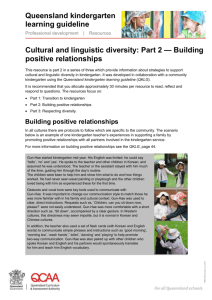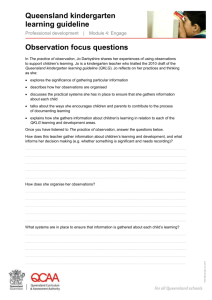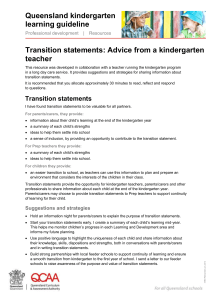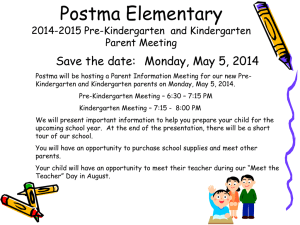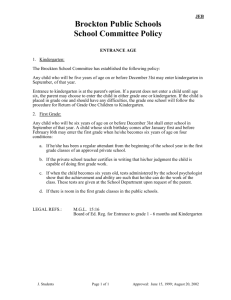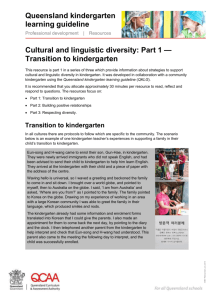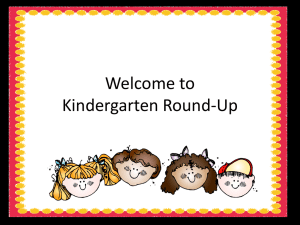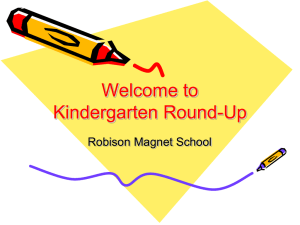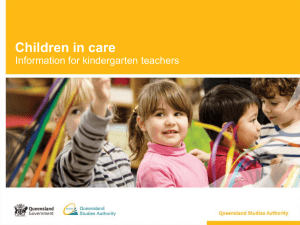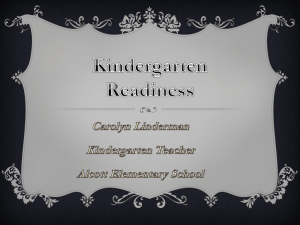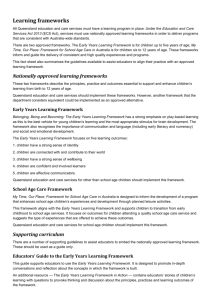Kindergarten: Cultural and linguistic diversity, Respecting diversity
advertisement
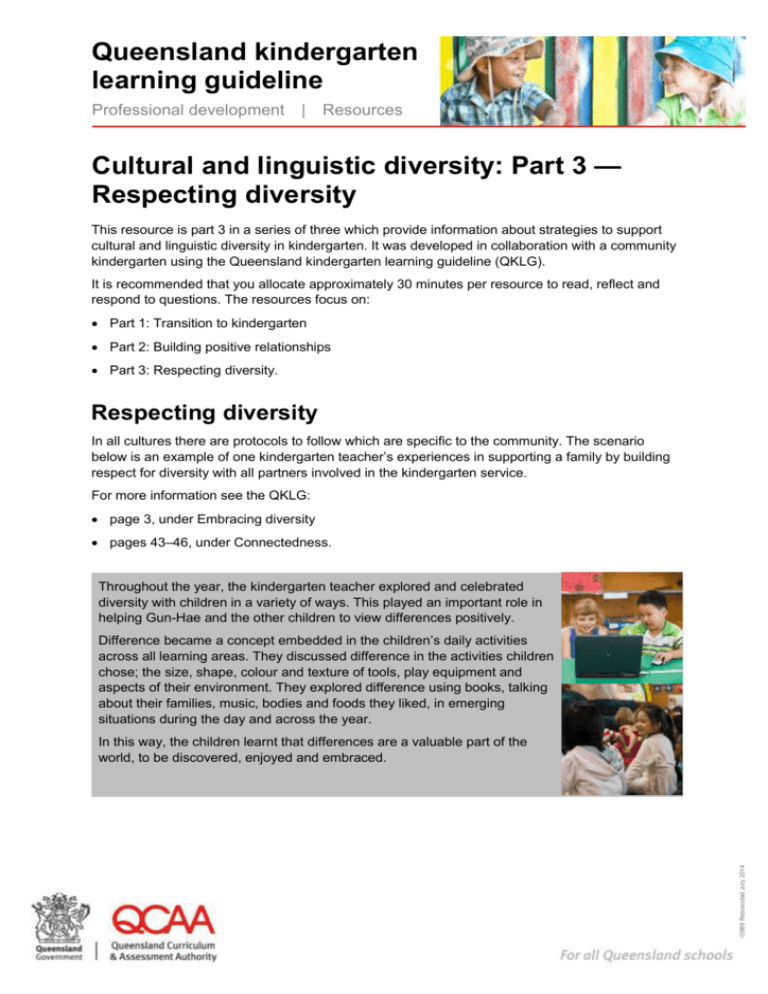
Queensland kindergarten learning guideline Professional development | Resources Cultural and linguistic diversity: Part 3 — Respecting diversity This resource is part 3 in a series of three which provide information about strategies to support cultural and linguistic diversity in kindergarten. It was developed in collaboration with a community kindergarten using the Queensland kindergarten learning guideline (QKLG). It is recommended that you allocate approximately 30 minutes per resource to read, reflect and respond to questions. The resources focus on: Part 1: Transition to kindergarten Part 2: Building positive relationships Part 3: Respecting diversity. Respecting diversity In all cultures there are protocols to follow which are specific to the community. The scenario below is an example of one kindergarten teacher’s experiences in supporting a family by building respect for diversity with all partners involved in the kindergarten service. For more information see the QKLG: page 3, under Embracing diversity pages 43–46, under Connectedness. Throughout the year, the kindergarten teacher explored and celebrated diversity with children in a variety of ways. This played an important role in helping Gun-Hae and the other children to view differences positively. Difference became a concept embedded in the children’s daily activities across all learning areas. They discussed difference in the activities children chose; the size, shape, colour and texture of tools, play equipment and aspects of their environment. They explored difference using books, talking about their families, music, bodies and foods they liked, in emerging situations during the day and across the year. r0989 Rebranded July 2014 In this way, the children learnt that differences are a valuable part of the world, to be discovered, enjoyed and embraced. Celebrate diversity throughout the program Greet children in another language. Rote count in another language. Display pictures, photographs, images, maps, artworks, letters, postcards, etc. from people in other times and places. Value and celebrate differences by promoting respect and valuing similarities and differences in people’s feelings, needs, ideas and opinions. Explore a range of culturally diverse activities and relevant resources to explore aspects of culture and similarities and differences among people. Broaden current art and craft experiences to include aspects of other cultures and heritages. Source opportunities to put diversity into practise, e.g. model and reinforce children’s efforts to listen and accept points of view, ideas or opinions that may be different from their own. Reach out to families; ask them about their special festivals and celebrations and invite them to share and talk about the importance of artefacts, tools, places, stories, languages, dances and accounts from their own culture/s. Display a translated version of welcome signs, sign-in sheets and daily information to make families feel welcome. Some cultural factors to consider Engage the family so parents/carers understand how kindergarten programs operate, and the advantages for their children. Cultural cues of respect are of most importance, e.g. some cultures do not shake hands with a particular hand due to their beliefs. The function of painting varies greatly from one culture to another. Some art is made for special occasions, whether to assist in a healing process, to celebrate marriage, or simply to tell a story. Similarities and differences may be observed in cooking, music, books, magazines, and newspapers. Do not assume that all children know what to do with playdough or an easel. Model how things work when you introduce new activities. Approach having children from different cultural backgrounds with a sense of curiosity and adventure. A welcoming and inclusive multicultural school is one in which students and parents of all linguistic and cultural backgrounds feel welcome, valued, and included. Adding English: A guide to teaching in multilingual classrooms, Elizabeth Coelho, 2004, Pippin Publishing, Toronto. QKLG Professional development Cultural and linguistic diversity: Part 3 — Respecting diversity Queensland Curriculum & Assessment Authority July 2014 Page 2 of 3 Consider these questions as you reflect on ways to explore diversity with children and build respect for differences: 1. How can you include parents/carers in your program? 2. What strategies can you implement in your context to ensure the inclusion of all learners? Whoever you are, wherever you are, our blood is the same. Whoever you are, wherever you are. Whoever you are, Mem Fox 1997, Voyager, San Diego. More information The QKLG is available at: www.qcaa.qld.edu.au/10192.html Additional information and resources are available to support: cultural and linguistic diversity: www.qcaa.qld.edu.au/12974.html awareness of and respect for Australia’s first peoples: Aboriginal, Torres Strait Islander and other Australian flags are available for free from your local member’s office. These can be displayed and may present a starting point for discussions with children about our cultural heritage. QKLG Professional development Cultural and linguistic diversity: Part 3 — Respecting diversity Queensland Curriculum & Assessment Authority July 2014 Page 3 of 3

